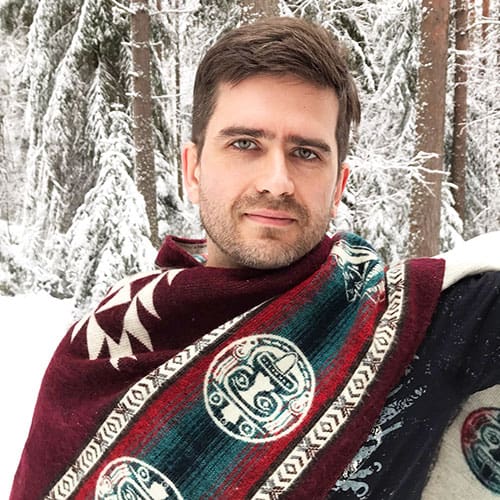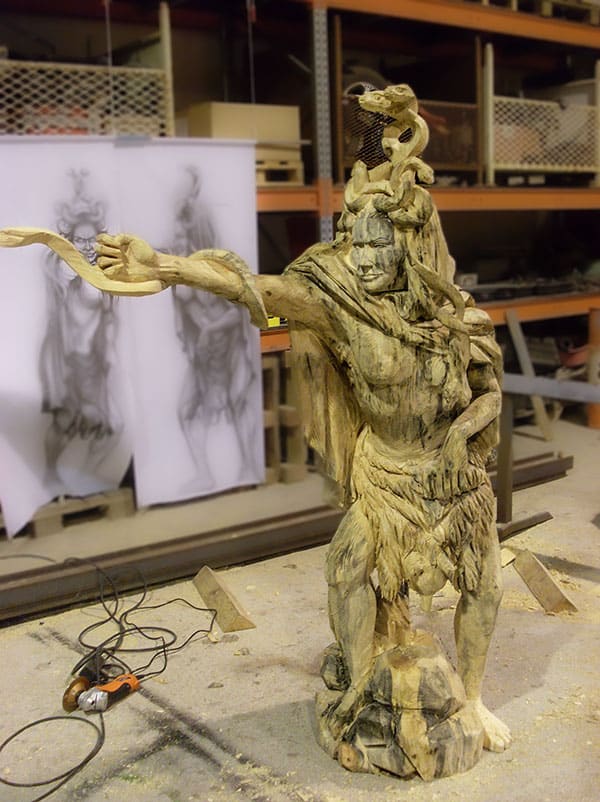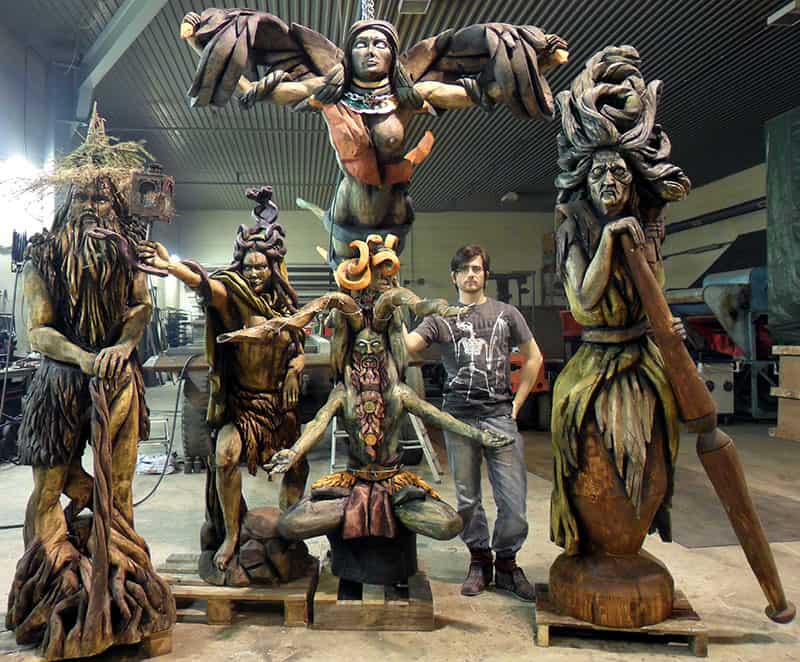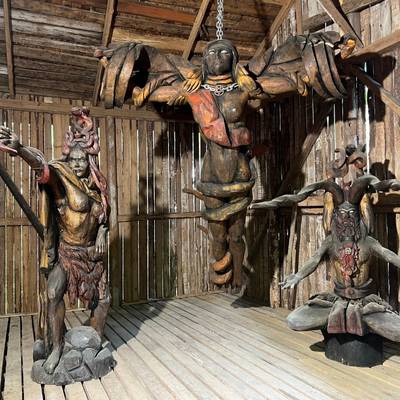Hannu Kumpula
Seinäjoki (1983)

Folktales and mythology
Hannu Kumpula is a self-taught artist. His wood sculptures are like a gateway to a mythical world. Kumpula’s art shows strands of tradition and mythology in a way that reflects not only his ancestry but also a deep interest in various folk tales and myths.
An early decision about the artist's path
Kumpula has a degree in carpentry and a master’s degree in decorative sculpture, but as an artist he is completely self-taught. Hannu Kumpula’s passion for art began to sprout in his childhood, when he noticed the power and charm of drawing. He was only three years old when he announced that he would grow up to be an artist.
Over the years, Kumpula has made, among other things, fantasy-themed Illustrations and oil paintings. His interest in wood carvings started at school where he studied decorative carving. Instead of making a decorative, beautiful piece of furniture, it seemed more natural to him to sculpt something where his artistic side could come out. This is where the story of wood sculptures began.
As a sculptor, Kumpula masterfully controls the processing of wood. In his hands, the tree becomes alive, bending to the will of his imagination.
Wooden sculptures where tradition, myths and mythology meet each other
Hannu Kumpula has always been interested in folk tales and mythologies, which is clearly visible in his art. In his works, tradition, myths and mythology meet each other.
Hannu’s art strongly shows the power of imagination and the ability to see old folktales and myths in the present. His art reflects a deep connection to traditional stories, creating works that honor the past while bringing it into the present moment.

Hannu Kumpula describes the Kalevala in his own way
Hannu skillfully combines the world of fantasy and old mythical stories. His ability to depict mythical stories through drawings and sculptures speaks of an artist who is not only talented, but also artistically courageous.
The presence of Kalevala stories in Hannu Kumpula’s works is like a bridge between the past and the present. He brings out the richness of Finnish culture, and at the same time brings new shades to it.

The works of the exhibition

Inanna, Cernunnos, Ajatar, Baba Yaga
Inanna
Another winged Goddess is the ancient Sumerian Inanna. Inanna is the goddess of love, war, and fertility. This ancestor determines destinies and rules that everyone must follow, but above all she represents the mystery of procreation and creation. The serpent coiled around her body tells a secret that only the Creator knows; the secret of sexuality; how life is created. The story of the forbidden fruit.
Cernunnos
A shaman dressed as an animal enters a trance and lures horned deer from the spirit world to become human prey. Cernunnos reflects this nature of the wild peoples, which dates back to the Ice Age. In the Middle Ages, horned heads were demonized as representatives of evil by the church. The Hindu appearance of this Cernunnos is explained by excessive listening to Goa trance.
Ajatar
Ajatar is the commander of snakes and goblins, an evil witch who lurks in the forests, whose unholy passion is to deceive, or mislead, those who wander in the forest. She makes people sick with just her gaze. The strange sounds and whispers heard in the forest at night are manifestations of Ajatar. If you have nightmares while sleeping in the forest, it is likely that Ajatar has slept next to you.
Baba Yaga
Baba Yaga from Slavic mythology is the tallest statue in the collection at about two and a half meters tall. Baba Yaga sits in a mortar and moves around with a paddle. She is also a forest-dwelling witch who stirs up storms.


